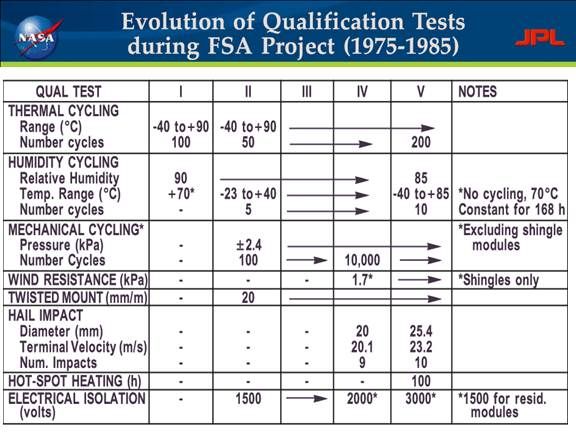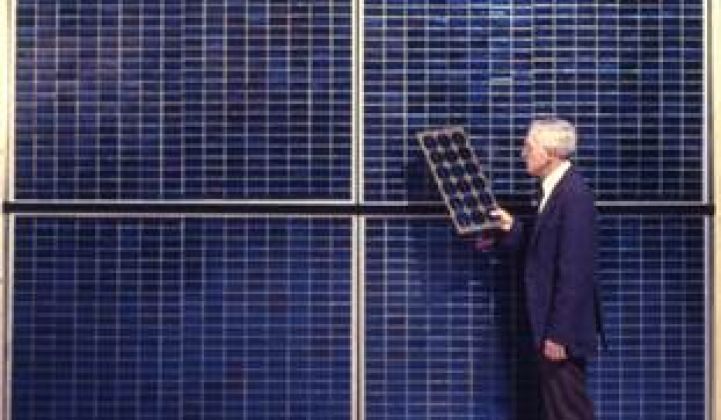As the solar industry wrestles with issues of quality and reliability that may be its biggest challenges, an engineer looked back four decades to the first reliability standards and discovered a crucial lesson the industry still has not learned.
During the oil crises of the 1970s, the Department of Energy funded a proposal to transform solar technologies developed to power early space exploration. “It was the beginning of the terrestrial PV program,” explained Ronald Ross, who was the NASA-Jet Propulsion Laboratory (JPL) Flat Plate Solar Arrays Engineering and Reliability Manager from 1975 to 1990, speaking at the 39th IEEE Photovoltaic Specialists Conference in Tampa, Florida. “We had to figure out how to get from a few small-scale applications to large-scale future applications for high-voltage central utilities.”
They used the protocols and organizational procedures from an aerospace industry that had just conquered the moon.
The program covered everything from sand for silicon to module reliability, Ross said. “I was in charge of things like failure analysis, specifications and accelerated life and field testing. A critical part was reliability.”
Manufacturers like Bechtel and GE (NYSE:GE) were selected to take on module design, prototype production and quality testing, and large-scale production, Ross said. The Department of Energy fielded the program in multiple applications around the country through its labs.
“It was a closed-loop process,” Ross explained. “When the field data came in, we went to work to understand the underlying physics of the issues we saw. Then we came up with a test that would identify and prevent the failures.”

Two key observations Ross made in those early evaluation processes are still used today.
First, Ross noted that system operating voltage was the first cause of failure because it leads to cell and module issues. That meant the use of solar modules in high-voltage, utility-scale systems would be especially challenging.
Second, although reliability issues were accelerated by a factor of two for every ten degrees centigrade of temperature, they were accelerated by a factor of ten for every ten points of humidity. “In an 85 degrees, 85 percent humidity test chamber,” Ross said, “a module only needs to be tested for a few days to simulate Phoenix, but it has to be tested for 45 days to simulate Miami.”
By the early 1980s, Ross said, the JPL specifications were producing modules with twenty-year life expectancies.
“But DOE wanted a 30-year life, because the present value for arrays was substantially greater for 30 years than it was for twenty years,” Ross said. “But we couldn’t make a module that had a 100 percent, 30-year life.” The solution, Ross explained, was designing modules that would last upwards of 35 years, which gave them “the same economic value as a 30-year, 100 percent life.”

It is crucial to note, Ross said, that allowable levels of failure for a 30-year life were extremely stringent. Examples were:
- One cracked or open circuit cell per 20,000 per year
- An almost immeasurable 0.2 percent per year power degradation from cell-related issues
- One module failure per 1,000 per year
His point, Ross said, is that the only way such failure rates could be observed was through large and complete field data sets collected in the program’s closed-loop system.
“The overall closed-loop process is critical to reliability,” Ross reiterated. “The problem today is the solar community isn’t under one organizational structure. Somebody needs to gather and assess a large and complete data set.”
Quality control for the 1 million Barbie dolls produced every day at Mattel (NASDAQ:MAT) comes from the company's careful and thorough assessment of the Barbie doll returns to Wal-Mart, its biggest customer, Ross said. “That data flows back to Mattel manufacturing officers so they can know what they need to be working on. That is what the PV community needs to do to correct its manufacturing processes.”



